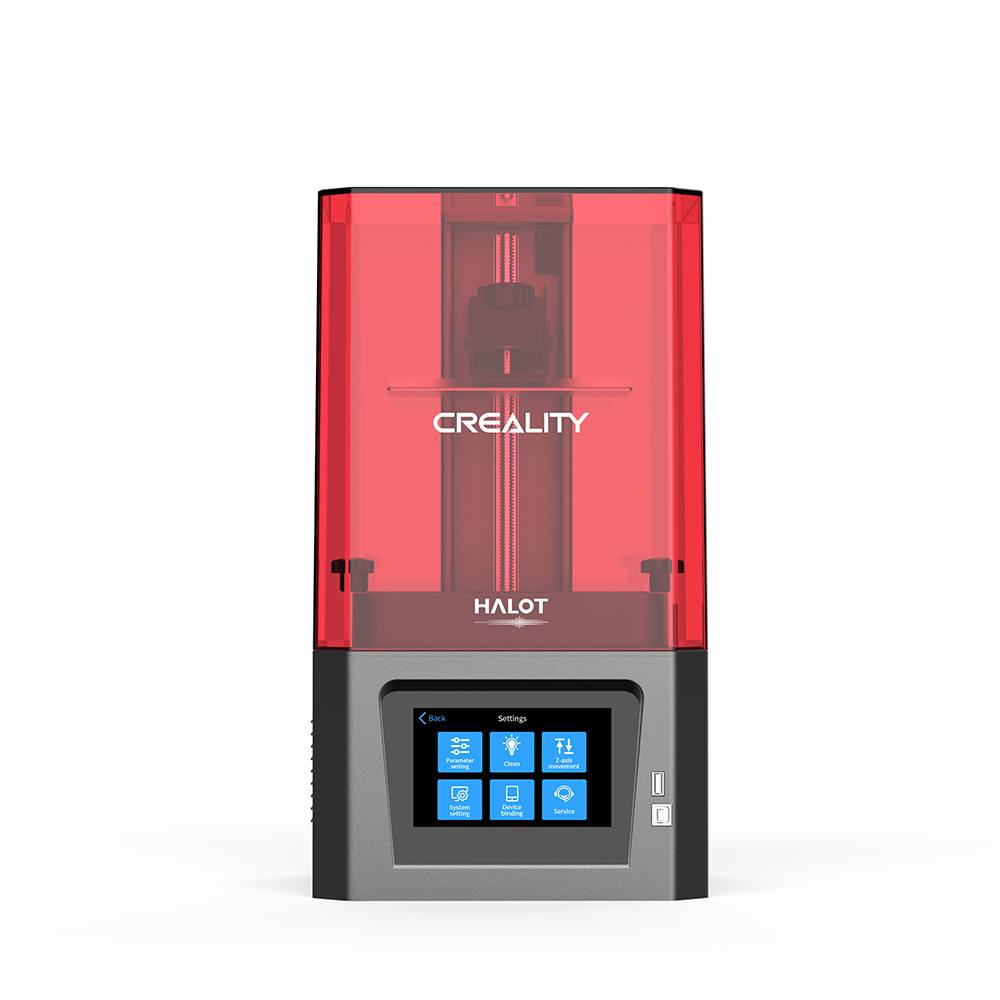Compare Halot One vs Photon M3 Premium
Comparison between the best 3D printers
Choose the best 3D printer at the best price. The cheapest 3D printers are here.
Buy a 3D printer here with 3D Fila.
 |
 |
|
| Model | Halot One |
Photon M3 Premium[BUY Photon M3 Premium] |
| Printing Material | Resin | Resin |
| Buy Resin for Creality 3D Halot One | Buy Resin forAnycubic Photon M3 Premium | |
| Estimated price | $250,00 | $600,00 |
| Manufacturer | Creality 3D | Anycubic |
| Release Year | 2021 | 2022 |
| Print Volume [mm] | 127x80x160 | 123x219x250 |
| Printer Size [mm] | 221x221x404 | 330x350x630 |
| Weight [kg] | 7,1 | 19 |
| Power Loss Recovery | NO | NO |
| Technology | LCD | LCD |
| Screen Resolution | 8k | |
| Max Print Speed [s/layer] | 1 | 1 |
| Maximum Resolution [mm] | 2k | 0,01 |
| Processor | ||
| Display | Display touchscreen 4,3'' | |
| Power Supply | 150 W | |
| Connectivity | USB / Wi-Fi | |
| Operating systems | Windows, Mac, Linux | |
| Date of registration in the system | 2022-10-11 | 2023-01-19 |
| Release date | 2021 | 2022 |
| Extra features | Crealitys Halot-One printer stands out with several innovative features. It has a high-resolution touchscreen, providing an intuitive and responsive interface. Its quiet printing capability is remarkable, ideal for environments where noise is a concern. Assembly and setup are simple, with automatic functions facilitating quick start. Among its features, remote monitoring and adjustments via the Creality Cloud app stand out, simplifying remote print management. Replacing the FEP in the resin vat is easy, and the printer even includes extra FEP sheets. Top cover removal detection increases safety by automatically pausing printing. In addition, its integral light source promises high uniformity, optimizing print quality. | The Anycubic Photon M3 Premium Printer features MSLA technology with a 10-inch monochrome LCD screen and 8K resolution, ensuring prints with fine details thanks to the 28.5 micron resolution. It has a generous build volume (219 x 123 x 250 mm), an intelligent cooling system for greater durability, and a laser-etched build plate for better adhesion. It offers dual air filters, reducing odors, and the promise of compatibility with the Anycubic Cloud app. Its design includes an Art Deco-style UV curved glass and an efficient leveling system for the build platform. |
| Support for multiple colors and materials (AMS and CFS) | NO | NO |
Notes * |
||
| Cost-benefit | 8 / 10 | 7 / 10 |
| Hardware | 0.6 / 10 | 3.5 / 10 |
| Tela | . | . |
| Print volume | 3 / 10 | 3 / 10 |
| Performance | 9 / 10 | 9 / 10 |
| [BUY Photon M3 Premium] |
Conclusion |
| In comparing the Creality 3D Halot One and the Anycubic Photon M3 Premium, both printers exhibit remarkable capabilities and distinct advantages tailored to varying user needs. The Halot One stands out as a budget-friendly option, especially with its intuitive interface, quiet operation, and features that facilitate user-friendliness such as remote monitoring and easy assembly. Its lower price point makes it an attractive choice for hobbyists or those new to 3D printing who require a reliable machine without a significant financial commitment. Furthermore, its overall performance rating is commendable, particularly in maintaining print quality and operational efficiency. Conversely, the Photon M3 Premium offers higher specifications, such as superior resolution capabilities and a larger print volume, making it ideal for users focused on detailed and complex projects. The advanced features included, such as an intelligent cooling system and dual air filters, enhance the longevity and usability of the printer, justifying its higher price point. The robust build and innovative design resonate well with professionals or serious enthusiasts who demand higher performance from their 3D printer. In summary, if affordability and ease of use are primary concerns, the Creality 3D Halot One represents a compelling option that doesn't compromise on quality. However, for those seeking advanced features and greater print precision, the Anycubic Photon M3 Premium is worth the investment. Ultimately, the choice hinges on the user's specific requirements, budget constraints, and desired printing outcomes. |

